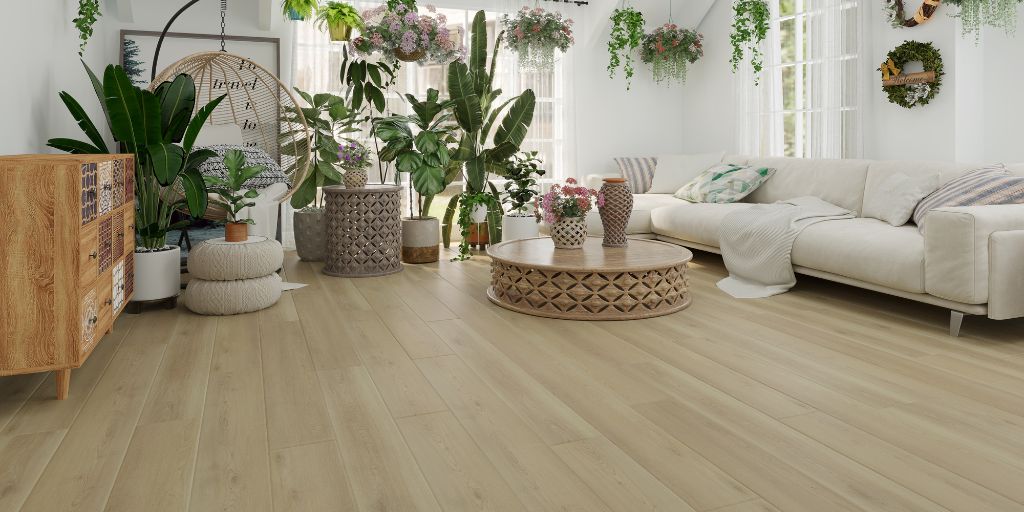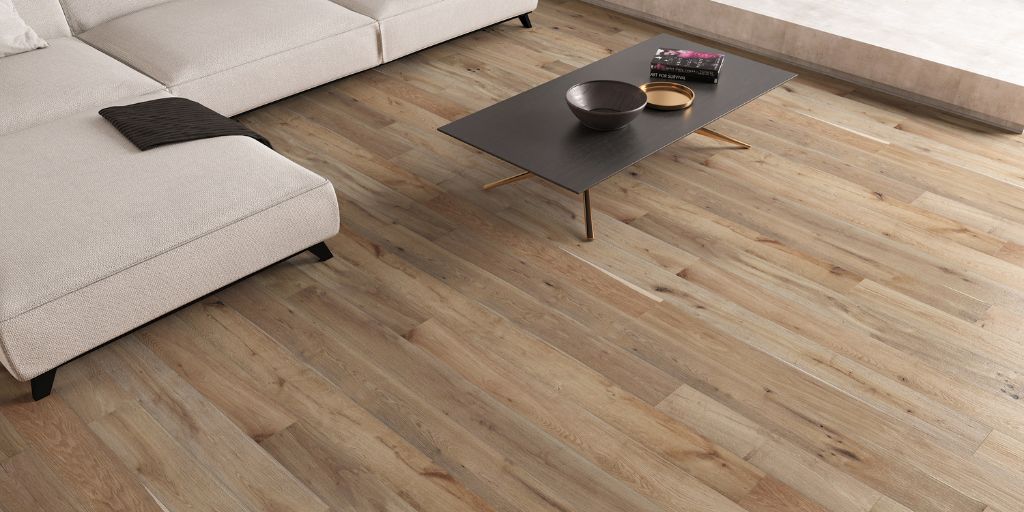When asked about their preferences, most home buyers would likely say they favor large rooms with high ceilings and lots of natural light from large windows. This sounds great, but, unfortunately, these popular features don’t really sound great. Living in an echo chamber is not that cozy!
For several reasons, including families spending more time at home, multigenerational households and those lovely large rooms with high ceilings, sound abatement has become another one of those “must have” features that contemporary homeowners request from architects and builders. If the residence happens to be in a loft-style environment with concrete floors and windows looking out over an urban setting, the combination of room echo, and outside noise can be deafening.
It may surprise some that the better acoustics in residential and commercial spaces, such as retail stores or restaurants, can be right under their feet, on the floor.
What This Means for You — Architects, interior designers, builders, and the clients they serve—homeowners—have discovered a new tool to combat inferior sound quality in homes and commercial buildings. It’s flooring. However, it's not just any flooring, but that which is designed and installed for noise abatement.
Peace and quiet sound great, especially at home. One way to get this is by choosing sound-abating flooring from Acme. Click here for great ideas.
Better Acoustic Design
In an article for GB&D magazine, Andrew Biro notes, “In architecture, acoustic design refers to the strategies, features, and methodologies used to achieve ‘good sound’ within a building. The definition of this ‘good sound’ depends on what the room or building is being used for. In most cases, acoustic design strives to control how soundwaves and sound energy reverberate off a building’s interior to maximize vocal clarity while also reducing echoes and excessive sound transmission.”
He added that acoustic design is largely influenced by the following sound characteristics:
- Reverberation. This is reflected sound from a sound wave created within a space.
- Reverberation time. The time required for sound reflections to decay by 60 dB until they are no longer audible and become lost in space. This is directly proportional to the room and indirectly proportional to the number of sound-absorbing materials.
- Sound distribution. How sound is distributed throughout a room (e.g., directly from the source to the receiver).
- Sound absorption. The loss of sound energy is a direct result of the sound encountering an absorbent material.
“Acoustic design is an integral component when it comes to creating comfortable, healthy, and productive interior spaces,” he concluded.

Turn the Sound Down
There was a time when homeowners relied on heavy drapes, carpet or large rugs to deal with annoying sound challenges such as teenagers practicing piano, trumpet, or (worst of all) drums; sounds from media rooms; or “Zoom” calls from home offices. However, these proved to be inadequate, and matters were made worse if family members happened to be allergic to the fibers from these furnishings.
In more recent times, technology in the manufacturing of flooring has come to the rescue of families who are experiencing the cacophony of modern life. And fortunately, Acme has gone to the worldwide marketplace and returned with flooring that helps ameliorate the chatter and the clatter.
Flooring products such as engineered hardwood are designed to last for decades and help mitigate noise.
Engineered Hardwood Sounds Great
The home design experts at Better Homes & Gardens recognize a sound solution when they hear it. The magazine notes, “Known for durability and style, hardwood floors have been a go-to flooring option for centuries. However, hardwood trees are slow growers, and the demand for beautiful, durable floors isn’t slowing down. The solution? Engineered wood.
“Unlike traditional hardwood flooring, which consists of solid wood planks, engineered wood planks consist of a thin top layer of hardwood glued to an engineered base. The word ‘engineered’ is a technical term for wood boards that have been formed using wood pieces and adhesives. While there are many types of engineered wood, the most common is plywood.”
Acme flooring specialist Cassandra Kilgore notes, “The composition of this type of hardwood, with its multiple layers and the fact that these planks are glued down on the concrete base floor – leaving no room for even a small echo from a shoe striking the floor - allows it to provide better acoustics in large rooms that might otherwise sound cavernous.”

Kilgore points to one of Acme’s most popular engineered hardwoods, Casablanca. “This is a premium hardwood with a trendy matte finish and light wire brushing reminiscent of hand-rubbed oil-finished floors. Casablanca is made using green materials and is offered in 7-inch-wide planks and a unique 3 ½ - inch-wide herringbone pattern. This stunning flooring is available in two species of wood: hickory and oak.
“This is our top-of-the-line engineered hardwood, she adds. “The cost for this durable and lovely flooring is about $12 per square foot. Plus, it has a 50-year warranty for residential and a 25-year warranty for commercial installation. It also has a lifetime structural warranty.”
Better Homes & Gardens notes other advantages of this engineered hardwood flooring. These include:
Cost: When compared with traditional hardwood, engineered wood nearly always has a lower price point. Additionally, many of the savings associated with engineered flooring are found on the installation, as it’s quicker to install and often comes prefinished.
Warp-Resistance: Because of its construction, engineered flooring is resistant to warping and splitting due to moisture exposure and temperature variance.
Ease of Installation: On average, engineered flooring is much easier and quicker to install than traditional hardwood, making it a great DIY flooring solution.
Installation Flexibility: Engineered wood flooring performs in environments that solid wood flooring simply can’t. This includes installation on top of radiant floor heating, concrete slabs, basements, and humid environments. Many waterproof varieties are also available, making wood floors possible in places they’ve never been before, like bathrooms.
Step Right Up
With the current state of technology in flooring, there is no longer any reason for distracting echoes or noisy homes. Plus, this sound quality is only enhanced by the appearance of these “engineered” products. The time to step right up is now.
Great ideas for flooring are available 24/7 on the Acme website. Click here and prepare to be inspired.

